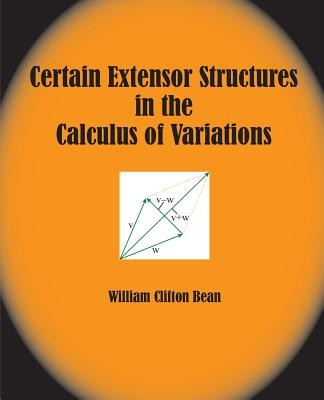
- We will send in 10–14 business days.
- Author: William Clifton Bean
- Publisher: YBK Publishers
- ISBN-10: 1936411407
- ISBN-13: 9781936411405
- Format: 19.1 x 23.5 x 1.2 cm, softcover
- Language: English
- SAVE -10% with code: EXTRA
Certain Extensor Structures in the Calculus of Variations (e-book) (used book) | bookbook.eu
Reviews
Description
Professor H. V. Craig (1900-1981), a firm believer in the power of invariant methods in mathematical physics, introduced extensors in 1937 as "tensors relative to the extended point transformation." Both Craig and A. Kawaguchi, another giant in the field of differential geometry, began to develop extensor theory in their independent research. Their leadership inspired many others to work on generalizations, derivations, and physical applications of extensors.
Certain Extensor Structures in the Calculus of Variations is a compilation of independent, unpublished research originally created as a doctoral dissertation by William Clifton Bean under the supervision of H. V. Craig. It is provided as a building block to stimulate further research in the application of extensors to mathematical physics and differential geometry. The serious student of tensor analysis will find great value in Chapter One's thorough introduction to extensors and related topics. This is especially true given the paucity of sources in print that collect this information in one place. William Clifton Bean is a retired senior engineer, NASA-Houston; an instructor of mathematics at the University of Houston-Clear Lake; and a fifty-year member of the Tensor Society, an international organization devoted to research in vector and tensor analysis, mathematical science, and information science. Bean worked in applied variational methods, trajectory optimization, lunar gravity models, pattern recognition, and navigation while at NASA-Houston.EXTRA 10 % discount with code: EXTRA
The promotion ends in 20d.17:52:46
The discount code is valid when purchasing from 10 €. Discounts do not stack.
- Author: William Clifton Bean
- Publisher: YBK Publishers
- ISBN-10: 1936411407
- ISBN-13: 9781936411405
- Format: 19.1 x 23.5 x 1.2 cm, softcover
- Language: English English
Professor H. V. Craig (1900-1981), a firm believer in the power of invariant methods in mathematical physics, introduced extensors in 1937 as "tensors relative to the extended point transformation." Both Craig and A. Kawaguchi, another giant in the field of differential geometry, began to develop extensor theory in their independent research. Their leadership inspired many others to work on generalizations, derivations, and physical applications of extensors.
Certain Extensor Structures in the Calculus of Variations is a compilation of independent, unpublished research originally created as a doctoral dissertation by William Clifton Bean under the supervision of H. V. Craig. It is provided as a building block to stimulate further research in the application of extensors to mathematical physics and differential geometry. The serious student of tensor analysis will find great value in Chapter One's thorough introduction to extensors and related topics. This is especially true given the paucity of sources in print that collect this information in one place. William Clifton Bean is a retired senior engineer, NASA-Houston; an instructor of mathematics at the University of Houston-Clear Lake; and a fifty-year member of the Tensor Society, an international organization devoted to research in vector and tensor analysis, mathematical science, and information science. Bean worked in applied variational methods, trajectory optimization, lunar gravity models, pattern recognition, and navigation while at NASA-Houston.

Reviews